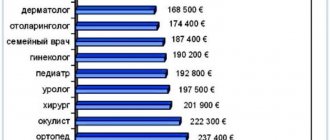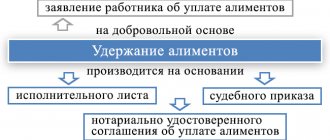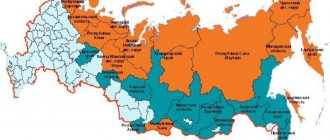What is the regional coefficient
This is a tool for equalizing workers’ incomes through an increasing financial indicator that indexes payments in constituent entities of the Russian Federation with special climatic conditions and equivalent ones. This mechanism is applied both at the state and municipal levels. Legal regulation is carried out through the Labor Code of the Russian Federation (Articles 146, 148, 316), Federal Law dated 02/19/1993 No. 4520-1, Resolution of the Ministry of Labor dated 09/11/1995 No. 49.
Payment of pensions with a regional coefficient
Pensioners from among the persons specified in Article 1 of this Law, and members of their families living in areas where the monetary allowance of military personnel and employees of internal affairs bodies, the State Fire Service, bodies for control of the circulation of narcotic drugs and psychotropic substances, institutions and bodies of the penal system (hereinafter referred to as employees), in accordance with the legislation of the Russian Federation, coefficients are established, for the period of their residence in these areas pensions
, assigned in accordance with this Law, the
supplements to these pensions
provided for in Articles 17, 24 and 38 of this Law, and the increases provided for in Article 16 of this Law,
are calculated using the appropriate coefficient established in the given locality
for military personnel and employees by the Government of the Russian Federation in accordance with federal laws.
We recommend reading: Where to start privatizing a summer cottage
According to Art. 48 Federal Law “On pension provision for persons who served in military service, service in internal affairs bodies, the State Fire Service, authorities for control of the circulation of narcotic drugs and psychotropic substances, institutions and bodies of the penal system, and their families”:
When to use
The regional coefficient for the regions of Russia 2021, the table of which is given below, is indexed for the following types of income of workers in regions with difficult working conditions:
- Minimum wage and payments calculated from the minimum wage;
- basic salary, wage rate, that is, all income from work received by the employee;
- compensation, incentives, bonus payments and allowances;
- increase for hazardous work or work in dangerous conditions;
- temporary disability benefits;
- wages of part-time workers and employees under GPC agreements;
- contributions to the Pension Fund;
- additional payments established in accordance with the provisions of the collective agreement.
When not applicable
The regional coefficient does not apply if earnings are calculated based on amounts in which this multiplier is already taken into account. These are the following payments:
- vacation pay, since they are calculated on the basis of the full salary, and that, in turn, is calculated taking into account regional allowances;
- financial assistance if it is paid one-time and not on an ongoing basis, and the accrual rules are not specified in the collective agreement;
- periodic bonuses;
- travel expenses if the trip is to a region for which a regional coefficient has not been established;
- when calculating the “northern” bonus, since a separate increasing indicator is provided for work in the Far North, increasing the same income group of employees involved in such conditions.
Minimum old-age pension in 2021 in the Krasnodar Territory
- pensioners who are dependent on disabled citizens;
- persons who care for disabled people of group 1;
- pensioners who care for disabled children;
- citizens of retirement age who live together with persons over 80 years of age and who care for them.
- persons who have reached a certain age. For women it is 55 years, for men – 60 years. They must be citizens of the Russian Federation;
- persons with Russian citizenship who have worked in the northern territories (or equivalent) for 15 years or more. In this case, women must be 50 years old, and men must be 55 years old;
- persons who have Russian citizenship and are in the public service. Women must be 56 years old, men must be 61 years old (as of 2021). Gradually, the age limit for this group of people should rise;
- foreign citizens who have worked at Russian enterprises for at least 15 years. Women must be 60 years old and men 65 years old.
30 Jun 2021 hiurist 2385
Share this post
- Related Posts
- Amount of subsidy for a young family in Sumerla
- Law on Labor Veterans of the Republic of Adygea in the Latest Edition
- Benefits for persons evacuated from the exclusion zone
- How much does it cost to scrap a car at traffic police in 2021?
Who does it apply to?
All employees, regardless of the organizational and legal form or type of activity of the enterprise, working and living in areas experiencing difficulties with the following basic conditions can apply for a regional supplement:
- transport interchange;
- infrastructure;
- ecology;
- weather and climate;
- features of the organization's activities.
The rules apply to absolutely all employees - both full-time employees and employees working under civil contracts - working and living in the Far East, the Far North (and regions of similar status) and the south of the East Siberian territories.
Table of regional coefficients for Russia
Regional coefficient by regions of Russia 2021: the table is similar to that illustrating the list of constituent entities of the Russian Federation and coefficient indicators used in the current year, 2021. At the end of the article you can download this table as a file.
| N | The subject of the Russian Federation | Coefficient | What is installed |
| 1 | Republic of Adygea | Regional coefficient has not been established | |
| 2 | Altai Republic: | ||
| throughout the territory | 1,4 | Resolution of the Council of Ministers of the Government of the Russian Federation dated May 29, 1993 No. 512 | |
| Kosh-Agachsky, Ulagansky districts | 1,4 | The normative legal act has not been established | |
| 3 | Republic of Bashkortostan | 1,15 | |
| 4 | The Republic of Buryatia: | ||
| throughout the territory | 1,2 | Resolution of the State Committee of the Council of Ministers of the USSR on labor and wages and the All-Union Central Council of Trade Unions dated October 8, 1960 No. 1167/26 | |
| Barguzinsky, Kurumkansky, Okinsky districts | 1,3 | The normative legal act has not been established | |
| 5 | Bauntovsky, Muisky, Severobaikalsky districts, Severobaikalsk | 1,7 | Resolution of the Central Committee of the CPSU and the Council of Ministers of the USSR dated 07/08/1974 No. 561 |
| 6 | The Republic of Dagestan: | ||
| for settlements located at an altitude of 2000 to 3000 meters above sea level | 1,2 | Resolution of the Council of Ministers of the Dagestan SSR dated January 10, 1992 No. 5 | |
| for settlements located at an altitude of 1500 to 2000 meters above sea level | 1,15 | ||
| 7 | The Republic of Ingushetia | Regional coefficient has not been established | |
| 8 | Kabardino-Balkarian Republic | Regional coefficient has not been established | |
| 9 | Republic of Kalmykia: | ||
| on the territory of the Kalmyk Autonomous Soviet Socialist Republic, bounded from the north and west by the border line with the Astrakhan region through the village. Chompot, s. Severny, village Tsagan-Nur, p. Burugsun - 10 km, east of the village. Kugulty, further to the southern border of the Priozerny district with. Shatta-UlanErge, p. Iki-Burul, village. Southern, from the south along the border of the Kalmyk Autonomous Soviet Socialist Republic with the Stavropol Territory and the Dagestan Autonomous Soviet Socialist Republic to the Caspian Sea; at the state farms “Razdolny”, “Severny”, named after. Chkalova, “Novy”, “Yalmata”, “Ulan-Erginsky”, “Red Putilovets”, “Khomutnikovsky” | 1,3 | Resolution of the Council of Ministers of the Kalmyk Autonomous Soviet Socialist Republic of September 29, 1971 No. 491 | |
| on the territory of Yustinsky, Malo-Derbetovsky and Priozerny districts, limited on the west by a line from Lake Barmannak, state farm named after. Chapaeva, s. Dede-Lamon - s. Burgsun and from the south the territory where a coefficient of 1.3 is provided; on the territory of Priozerny, Tselinny, Yashkul and Iki-Burul districts, limited from the west and north-west by a line 10 km east of Kegulta village. Bor-Nur, p. Djendik, village Buratinsky, p. The giant from the south and southeast borders the Iki-Burulsky district with the Stavropol Territory, from the north and east - the territory where the coefficient is 1.3; on state farms “Buratinsky”, “Priozerny”, “Baga-Burulsky”, “Manych” | 1,2 | ||
| on the territory of the Kalmyk Autonomous Soviet Socialist Republic, with the exception of the territory where coefficients of 1.3 and 1.2 are provided, the city of Elista and the territories west of Lake Manych and ManychGudilo; in the state farms “Arshan-Zelmensky”, “Obilny”, “Ergeninsky”, “Sadovy”, “Troitsky”, “Balkovsky”, “Zapadny”, “Leninsky”, “Voznesenovsky” | 1,1 | ||
| in settlements provided with drinking water and water for domestic needs, as well as in regional centers, the coefficients decrease respectively from 1.3 to 1.2, from 1.2 to 1.1 | |||
| 10 | Karachay-Cherkess Republic | Regional coefficient has not been established | |
| 11 | Republic of Karelia: | ||
| Kondopoga, Pitkyaranta, Prionezhsky, Pryazhinsky, Suoyarvsky, Lakhdenpokhsky, Olonetsky districts, the cities of Petrozavodsk, Sortavala | 1,15 | Decree of the Government of the Russian Federation dated February 25, 1994 No. 155 | |
| Medvezhyegorsky, Muezersky, Pudozhsky, Segezhsky districts | 1,3 | Decree of the Government of the Russian Federation dated February 25, 1994 No. 155 | |
| The city of Segezha and the settlements subordinate to its administration | The normative legal act has not been established | ||
| Belomorsky, Kalevalsky, Kemsky, Loukhsky districts, Kostomuksha | 1,4 | Decree of the Government of the Russian Federation dated February 25, 1994 No. 155 | |
| The city of Kem and settlements subordinate to its administration | The normative legal act has not been established | ||
| 12 | Komi Republic: | ||
| Knyazhnogorsky, Kortkorossky, Sysolsky, Syktyvdinsky, Priluzsky, Ust-Vymsky, Ust-Kulomsky, Koygorodsky districts, Syktyvkar | 1,2 | Decree of the Head of the Komi Republic dated July 3, 1998 No. 232 | |
| Pechora, Sosnogorsk, Izhemsky, Ust-Tsilemsky, Troitsko-Pechorsky, Udora districts | 1,3 | ||
| the cities of Ukhta and populated areas subordinate to its administration, Pechora and populated areas subordinate to its administration, Sosnogorsk and populated areas subordinate to its administration, Vuktyl and populated areas subordinate to its administration | The normative legal act has not been established | ||
| Vuktyl district, Vuktyl city | 1,4 | Decree of the Head of the Komi Republic dated July 3, 1998 No. 232 | |
| Usinsky district, Inta cities, Usinsk | 1,5 | ||
| 13 | Vorkuta | 1,6 | |
| 14 | Mari El Republic | Regional coefficient has not been established | |
| 15 | The Republic of Mordovia | Regional coefficient has not been established | |
| 16 | The Republic of Sakha (Yakutia): | ||
| areas located up to the Arctic Circle, south of 65 degrees. northern latitude: Aldansky, Amginsky, Verkhnevilyuysky, Vilyuisky, Gorny, Kobyaisky, Leninsky, Lensky, Megino-Kangalassky, Neryungrinsky, Namsky, Mirninsky, Olekminsky, Ordzhonikidze, Suntarsky, Tattinsky, Tomponsky, Ust-Aldansky, Ust-Maysky, Churapchinsky, Yakutsky | 1,7 | Resolution of the Supreme Council of the Yakut-Sakha SSR dated June 28, 1991 No. 539-XII | |
| areas located beyond the Arctic Circle, not lower than 65 degrees. northern latitude: Abyisky, Allaikhovsky, Anabarsky, Bulunsky, Verkhnekolymsky, Verkhoyansky, Zhigansky, Mirninsky (territory of the Aikhal Soviet and Udachny City Council), Momsky, Nizhnekolymsky, Oymyakonsky, Oleneksky, Srednekolymsky, Ust-Yansky, Eveno-Bytantaysky | 2 | ||
| areas where enterprises and construction sites of the diamond mining industry are located, at the Aikhal and Udachnaya deposits, the Deputatsky and Kular mines | 2 | The normative legal act has not been established | |
| 17 | Republic of North Ossetia Alania | Regional coefficient has not been established | |
| 18 | Republic of Tatarstan | Regional coefficient has not been established | |
| 19 | Tyva Republic: | ||
| throughout the territory | 1,4 | The normative legal act has not been established | |
| Mongun-Taiginsky, Tozhinsky, Kyzylsky (territory of Shynaan Rural Administration) districts | 1,5 | ||
| 20 | Udmurt republic | 1,15 | |
| 21 | The Republic of Khakassia: | 1,3 | |
| 22 | Chechen Republic | Regional coefficient has not been established | |
| 23 | Chuvash Republic - Chuvashia | Regional coefficient has not been established | |
| 24 | Altai region: | ||
| throughout the territory | 1,15 | Resolution of the State Committee of the Council of Ministers of the USSR on labor and wages and the secretariat of the All-Union Central Council of Trade Unions dated August 17, 1971 No. 325/24 | |
| Aleysky, Baevsky, Blagoveshchensky, Burlinsky, Volchikhinsky, Egorievsky, Zavyalovsky, Klyuchevsky, Kulundinsky, Mamontovsky, Mikhailovsky, German, Novichikhinsky, Pankrushikhinsky, Pospelikhinsky, Rodinsky, Romanovsky, Rubtsovsky, Slavgorodsky, Suetsky, Tabunsky, Uglovsky, Khabarovsky, Shipunovsky districts, cities regional subordination Aleysk, Slavgorod, Yarovoye | 1,25 | Decree of the Government of the Russian Federation dated December 27, 1997 No. 1631 | |
| 25 | Krasnodar region | Regional coefficient has not been established | |
| 26 | Krasnoyarsk region: | ||
| throughout the territory | 1,3 | Resolutions of the Administration of the Krasnoyarsk Territory No. 160-g dated April 34, 1992, No. 311-p dated August 21, 1992, No. 393-p dated November 11, 1992 | |
| Kezhemsky district | 1,6 | Decision of the Executive Committee of the Krasnoyarsk Regional Council of People's Deputies dated 07/09/1991 No. 151-p | |
| Turukhansky (north of the Lower Tunguska and Turukhan rivers) region, areas located north of the Arctic Circle (with the exception of the city of Norilsk and settlements subordinate to its administration), the city of Igarka and settlements subordinate to its administration | The normative legal act has not been established | ||
| Norilsk and settlements subordinate to its Administration | 1,8 | ||
| 27 | Primorsky Krai: | ||
| throughout the territory | 1,3 | Decision of the Executive Committee of the Primorsky Regional Council of People's Deputies dated September 13, 1991 No. 263 | |
| settlements of the Taezhny and Ternisty mines in the Krasnoarmeysky district | 1,4 | Resolution of the State Committee of the Council of Ministers of the USSR on labor and wages and the Secretariat of the All-Union Central Council of Trade Unions dated April 30, 1968 No. 117/12 | |
| 28 | Stavropol region | Regional coefficient has not been established | |
| 29 | Khabarovsk region: | ||
| Khabarovsk, Bikinsky, Vyazemsky, named after Lazo, Nanaisky districts, Khabarovsk | 1,3 | Decision of the Executive Committee of the Khabarovsk Regional Council of People's Deputies dated July 18, 1991 No. 154 | |
| Ayano-Maysky, Tuguro-Chumikansky, Nikolaevsky, named after Polina Osipenko, Komsomolsky, Sovetsko-Gavansky, Vaninsky, Solnechny, Amursky, Verkhnebureinsky, Ulchsky districts, Komsomolsk-on-Amur | 1,5 | ||
| Okhotsk region | 1,7 | ||
| 30 | Amur region: | ||
| Arkharinsky, Belogorsky, Blagoveshchensky, Bureya, Zavitinsky, Ivanovsky, Konstantinovsky, Mazanovsky, Mikhailovsky, Oktyabrsky, Romnensky, Svobodnensky, Seryshevsky, Tambov districts, the cities of Blagoveshchensk, Belogorsk, Raichikhinsk, Svobodny | 1,3 | Resolution of the Deputy Head of the Administration of the Amur Region and the Presidium of the Council of the Federation of Trade Unions of the Amur Region dated December 13, 1991 No. 50 | |
| Magdachinsky, Shimanovsky districts, Shimanovsk | 1,4 | ||
| Skovorodinsky district | 1,5 | ||
| Zeya, Selemdzhinsky, Tynda districts, cities of Zeya, Tynda | 1,7 | ||
| 31 | Arhangelsk region: | ||
| throughout the territory | 1,2 | Resolution of the State Committee of the Council of Ministers of the USSR on labor and wages and the Presidium of the All-Union Central Council of Trade Unions dated November 20, 1967 No. 512/P-28 | |
| Leshukovsky, Pinezhsky districts | 1,4 | Resolution of the Administration of the Arkhangelsk Region dated May 14, 1993 No. 114 | |
| Mezensky, Solovetsky districts, Severodvinsk and settlements subordinate to its administration | The normative legal act has not been established | ||
| 32 | Astrakhan region: | ||
| the regional coefficient is applied to the wages of employees of enterprises and organizations located in desert and waterless areas in the “black lands”, “Kizlyar pastures”, in part of the Limansky district | 1,1 | Resolution of the State Committee of the Council of Ministers of the USSR on labor and wages of 08/06/1971 No. 315 | |
| the regional coefficient is applied to the wages of workers for work in desert and waterless areas engaged in water construction and construction of facilities on state farms and other agricultural enterprises in the Astrakhan region | 1,35 | Resolution of the State Committee of the Council of Ministers of the USSR on labor and wages of December 18, 1980 No. 372 | |
| the regional coefficient is applied to wages for work in desert and waterless areas: workers engaged in geological exploration, drilling wells, construction and operation of Astrakhan gas condensate field facilities, including workers of auxiliary enterprises, construction industry bases, as well as employees of the USSR Ministry of Internal Affairs employed on this construction; employees of enterprises and organizations serving the construction and operation of the Astrakhan gas condensate field; workers and employees of enterprises, organizations, institutions located in populated areas in the eight-kilometer sanitary protection zone of the Astrakhan gas complex for the period until the latter are resettled from this territory | Order of the Council of Ministers of the USSR dated 09/23/1981 No. 1921-r, Resolutions of the USSR State Committee for Labor and Social Issues of 02/19/1087 No. 106, dated 06/29/1990 No. 259/10-65, Resolution of the Council of Ministers of the RSFSR dated 08/17/1990 No. 309 | ||
| 33 | Belgorod region | Regional coefficient has not been established | |
| 34 | Bryansk region | Regional coefficient has not been established | |
| 35 | Vladimir region | Regional coefficient has not been established | |
| 36 | Volgograd region | Regional coefficient has not been established | |
| 37 | Vologda Region: | ||
| Babaevsky, Vologda, Gryazovets, Kaduysky, Mezhdurechensky, Sokolsky, Ustyuzhensky, Chagodoshchensky, Cherepovets, Sheksninsky districts, Vologda | 1,15 | Decree of the Government of the Russian Federation dated July 16, 1992 No. 494 | |
| Cherepovets with the territory subordinate to the city Council of People's Deputies | 1,25 | ||
| 38 | Voronezh region | Regional coefficient has not been established | |
| 39 | Ivanovo region | Regional coefficient has not been established | |
| 40 | Irkutsk region: | ||
| throughout the entire territory (with the exception of the city of Angarsk, the city of Cheremkhovo and the Cheremkhovo district, the city of Tulun and the Tulunsky district and employees of the Eastern Railway, for which decisions of the regional executive committee and resolutions of the Head of Administration were adopted) | 1,3 | Resolution of the Head of the Administration of the Irkutsk Region dated January 28, 1993 No. 9 | |
| Bratsky district, Bratsk | 1,4 | ||
| Ust-Ilimsky, Nizhneilimsky districts, Ust-Ilimsk | 1,6 | ||
| Ust-Kutsky district | 1,7 | Decision of the Executive Committee of the Irkutsk Regional Council of People's Deputies dated April 22, 1991 No. 206 | |
| 41 | Kaliningrad region | Regional coefficient has not been established | |
| 42 | Kaluga region | Regional coefficient has not been established | |
| 43 | Kamchatka region: | ||
| throughout the territory | 1,8 | Decision of the Executive Committee of the Kamchatka Regional Council of People's Deputies dated March 1, 1991 No. 83 | |
| Commander Islands | 2 | Resolution of the State Committee of the Council of Ministers of the USSR on labor and wages and the Presidium of the All-Union Central Council of Trade Unions dated 09/04/1964 No. 380/P-18 | |
| 44 | Kemerovo region | 1,3 | |
| 45 | Kirov region: | ||
| Afanasyevsky, Belokholunitsky, Bogorodsky, Verkhnekamsky, Darovsky, Zuevsky, Kirovochepetsky, Kamensky, Luzsky, Murashinsky, Omutninsky, Nagorsky, Oparinsky, Podosinovsky, Slobodskoy, Uninsky, Felensky, Khalturinsky, Yuryansky districts, Kirov with the territory subordinate to the city Council of People's Deputies | 1,15 | Resolution of the USSR State Committee on Labor and Social Issues and the Secretariat of the All-Union Central Council of Trade Unions dated October 17, 1988 No. 546/25-5 | |
| 46 | Kostroma region: | ||
| Buysky, Galichsky, Soligalichsky, Chukhlomsky, Sudaisky, Neysky, Manturovsky, Kologrivsky, Mezhevsky, Sharinsky, Ponazyrevsky, Vokhomsky, Pyshchugsky, Pavinsky, Parfenyevsky districts (the regional coefficient is applied to the wages of employees of logging, timber floating, timber transshipment enterprises, organizations and chemical forestry enterprises) | 1,15 | Resolution of the State Committee of the Council of Ministers of the USSR on labor and wages of 09/07/1960 No. 1089/23 | |
| 47 | Kurgan region | 1,15 | |
| 48 | Kursk region | Regional coefficient has not been established | |
| 49 | Leningrad region | Regional coefficient has not been established | |
| 50 | Lipetsk region | Regional coefficient has not been established | |
| 51 | Magadan Region | 1,7 | |
| 52 | Moscow region | Regional coefficient has not been established | |
| 53 | Murmansk region: | ||
| throughout the territory | 1,5 | Decree of the Administration of the Murmansk Region dated January 27, 1992 No. 64 | |
| village Fog | 1,7 | Decree of the Government of the Russian Federation dated May 27, 1992 No. 384 | |
| Murmansk-140 | 1,8 | Decree of the Government of the Russian Federation of November 12, 1992 No. 868 | |
| 54 | Nizhny Novgorod Region | Regional coefficient has not been established | |
| 55 | Novgorod region | Regional coefficient has not been established | |
| 56 | Novosibirsk region | 1,25 | |
| 57 | Omsk region | 1,15 | |
| 58 | Orenburg region | 1,15 | |
| 59 | Oryol Region | Regional coefficient has not been established | |
| 60 | Penza region | Regional coefficient has not been established | |
| 61 | Perm region: | ||
| throughout the territory | 1,15 | Resolution of the USSR State Committee on Labor and Social Issues and the Secretariat of the All-Union Central Council of Trade Unions dated July 2, 1987 No. 403/20-155 | |
| Krasnovishersky, Cherdynsky districts | 1,2 | ||
| 62 | Pskov region | Regional coefficient has not been established | |
| 63 | Rostov region: | ||
| Zavetinsky, Remontnensky districts; Dubovsky, Zimovnikovsky, Orlovsky, Proletarsky districts, bounded from the west by the Salsk-Volgograd railway line, from the north - by the border with the Volgograd region, from the east, north-east and south - by the border with the Republic of Kalmykia (in the regional centers of the village of Dubovskoye, the village. Zimovniki, Orlovsky village and Proletarsk, the coefficient does not apply) | 1,1 | Resolution of the Council of Ministers of the Government of the Russian Federation dated October 7, 1993 No. 1004 | |
| 64 | Ryazan Oblast | Regional coefficient has not been established | |
| 65 | Samara Region | Regional coefficient has not been established | |
| 66 | Saratov region | Regional coefficient has not been established | |
| 67 | Sakhalin region: | ||
| Aleksandrovsk-Sakhalinsky, Anivsky, Dolinsky, Korsakovsky, Makarovsky, Nevelsky, Poronaisky, Smirnykhovsky, Tomarinsky, Tymovsky, Uglegorsky, Kholmsky districts, Yuzhno-Sakhalinsk | 1,6 | Decision of the Executive Committee of the Sakhalin Regional Council of People's Deputies dated April 24, 1991 No. 130 | |
| Nogliki, Okha districts | 1,8 | ||
| Kuril, North Kuril and South Kuril regions | 2 | ||
| 68 | Sverdlovsk region: | ||
| throughout the territory | 1,15 | Resolution of the USSR State Committee on Labor and Social Issues and the Secretariat of the All-Union Central Council of Trade Unions dated July 2, 1987 No. 403/20-155 | |
| Garinsky, Taborinsky districts, in territories under the administrative subordination of Ivdelsky, Karpinsky, Krasnoturinsky and Severouralsky city councils (including cities) | 1,2 | ||
| 69 | Smolensk region | Regional coefficient has not been established | |
| 70 | Tambov Region | Regional coefficient has not been established | |
| 71 | Tver region | Regional coefficient has not been established | |
| 72 | Tomsk region: | ||
| Bakcharsky, Krivosheinsky, Molchanovsky, Teguldetsky districts | 1,3 | The normative legal act has not been established | |
| Alexandrovsky, Verkhneketsky, Kargasoksky, Kolpashevo, Parabelsky, Chainsky districts, cities of Kedrovy, Kolpashevo, Strezhevoy | 1,5 | ||
| the regional coefficient is applied to the wages of employees of enterprises and organizations engaged in the oil and gas industry, geological and topographic-geodetic work, as well as employees of construction, construction and installation and specialized departments, auxiliary production, transport, farms and organizations serving oil and gas production enterprises, drilling offices, construction of oil and gas industry facilities, geological and topographic-geodetic work in the Tomsk region north of 60° north latitude | 1,7 | Resolution of the State Committee of the Council of Ministers of the USSR on labor and wages and the Secretariat of the All-Union Central Council of Trade Unions dated April 16, 1966 No. 216/9 | |
| 73 | Tula region | Regional coefficient has not been established | |
| 74 | Tyumen region: | ||
| throughout the territory | 1,15 | Resolution of the State Committee of the Council of Ministers of the USSR on labor and wages and the Secretariat of the All-Union Central Council of Trade Unions dated August 17, 1971 No. 325/24 | |
| Uvatsky district | 1,5 | Decree of the Government of the Russian Federation dated August 11, 1992 No. 574 | |
| Tobolsk, Vagai districts, Tobolsk | 1,217 | Law of the Tyumen Region of November 30, 2001 No. 448 “On the establishment of additional compensation for employees of public sector organizations in the city of Tobolsk, Tobolsk and Vagai districts of the Tyumen region” | |
| 75 | Ulyanovsk region | Regional coefficient has not been established | |
| 76 | Chelyabinsk region | 1,15 | |
| 77 | Chita region: | ||
| throughout the territory | 1,4 | Decision of the Small Council of the Chita Regional Council of People's Deputies, the Administration of the Chita Region and the Federation of Trade Unions of the Chita Region dated 02.08.1993 No. с/а-47 | |
| Tungokochensky, Chernyshevsky, Tungiro-Olekminsky, Mogochinsky districts | 1,5 | ||
| Kalarsky district | 1,7 | ||
| 78 | Yaroslavl region | Regional coefficient has not been established | |
| 79 | Moscow | Regional coefficient has not been established | |
| 80 | Saint Petersburg | Regional coefficient has not been established | |
| 81 | Jewish Autonomous Region | 1,3 | |
| 82 | Aginsky Buryat Autonomous Okrug | 1,4 | |
| 83 | Komi-Permyak Autonomous Okrug: | ||
| throughout the territory | 1,15 | Resolution of the USSR State Committee on Labor and Social Issues and the Secretariat of the All-Union Central Council of Trade Unions dated July 2, 1987 No. 403/20-155 | |
| Gaininsky district | 1,2 | ||
| Kochevsky, Kosinsky districts | 1,2 | Decree of the President of the Russian Federation dated September 16, 1992 No. 1085 | |
| 84 | Koryak Autonomous Okrug: | ||
| throughout the territory | 1,6 | Resolution of the State Committee of the Council of Ministers of the USSR on labor and wages and the Presidium of the All-Union Central Council of Trade Unions dated 09/04/1964 No. 380/P-18 | |
| throughout the entire territory (the regional coefficient is applied to the wages of employees of construction and repair organizations) | 1,8 | Resolution of the State Committee of the Council of Ministers of the USSR on labor and wages and the Secretariat of the All-Union Central Council of Trade Unions dated March 31, 1960 No. 453/9 | |
| throughout the entire territory (the regional coefficient is applied to the wages of forestry workers) | 2 | The normative legal act has not been established | |
| 85 | Nenets Autonomous Okrug | 1,8 | |
| 86 | Taimyr (Dolgano-Nenets) Autonomous Okrug | 1,8 | |
| 87 | Ust-Ordynsky Buryat Autonomous Okrug | 1,3 | |
| 88 | Khanty-Mansiysk Autonomous Okrug - Ugra | 1,7 | |
| 89 | Chukotka Autonomous Okrug | 2 | |
| 90 | Evenki Autonomous Okrug: | ||
| Baykitsky, Tungusko-Chunsky districts | 1,5 | Decision of the Executive Committee of the Council of People's Deputies of the Evenki Autonomous Okrug dated December 10, 1991 No. 111 | |
| Ilimpiysky district | 1,6 | Resolution of the State Committee of the Council of Ministers of the USSR on labor and wages and the Presidium of the All-Union Central Council of Trade Unions dated 09/04/1964 No. 380/P-18 | |
| 91 | Yamalo-Nenets Autonomous Okrug: | ||
| north of the Arctic Circle (66° 33.3′ north latitude): | 1,8 | ||
| Salekhard, Aksarkovsky village council of the Priuralsky district | Resolution of the Governor of the Yamalo-Nenets Autonomous Okrug dated July 11, 2002 No. 192 | ||
| Labytnangi city, village. Sidorovsk of the Krasnoselkupsky district, Nydinsky and Yamburgsky village councils of the Nydymsky district, Baydaratsky, Beloyarsky and Kharsaimsky village councils of the Priuralsky district, Samburgsky village council of the Purovsky district, Tazovsky, Yamalsky districts | Decision of the Executive Committee of the Council of People's Deputies of the Yamalo-Nenets Autonomous Okrug of the Tyumen Region dated February 25, 1991 No. 53 | ||
| south of the Arctic Circle (66° 33.3′ north latitude): Gubkinsky, Muravlenko, Nadym, Novy Urengoy, Noyabrsk, Krasnoselkupsky district (except for the village of Sidorovsk), Nadymsky district (except Nydinsky and Yamburg village councils), Zelenoyarsky and Katravozhsky village councils of the Priuralsky district, Purovsky district (with the exception of Samburgsky village council), Shuryshkarsky district | 1,7 |
IMPORTANT!
We remind you that the regional coefficient is not indexed for vacation pay, one-time financial assistance, bonus payments on an irregular basis, and travel expenses (with the exception of trips to the regions covered by it)!
How odds are used
Let us show how regional coefficients are taken into account when calculating earnings using an example. Let's say Frolov F.F. lives and works in the Novosibirsk region. The table shows that for this subject of the Russian Federation a regional coefficient of 1.2 is established. Suppose that in the current working month, Frolov, in addition to a salary of 30,000 rubles, is entitled to a regular bonus for meeting targets in the amount of 10,000 rubles. Let's calculate how much money Frolov will receive using the formula:
payable = (salary + bonus) × district coefficient = (30,000 + 10,000) × 1.2 = 48,000 rubles.
If Frolov had received an increase of 10,000 rubles in the form of financial assistance from the organization, for example, in connection with the birth of a child, or a one-time bonus, for example, for a successful rationalization proposal, then the multiplier would have been applied only to the salary. In this case, Frolov would receive:
payable = salary × regional coefficient + financial assistance = 30,000 × 1.2 + 10,000 = 46,000 rubles.
Regional Pension Coefficient in the Krasnodar Territory
This also includes salmon, beluga caviar, crab meat, lobsters. Exemption from taxation The food products themselves will be subject to mandatory VAT upon sale at a rate of either 10% or 18%. However, transactions with food products may be exempt from tax. According to the Tax Code of the Russian Federation, such types of activities include the sale of food products by public catering organizations, the sale of food products in educational and medical institutions. There is no taxation of organizations exempt from VAT due to low turnover and small revenue based on previous activities. Entities using preferential regimes, such as UTII, Unified Agricultural Tax, Simplified Tax System, PSN, are also not required to impose VAT on food products. These conditions affect production and further sale, including resale of goods.
Thus, labor productivity is the reciprocal of labor intensity. Based on the specifics of the source data, it shows how many products are actually produced by a given production under actual production and economic conditions per unit of living labor expended in production. 2 To analyze the development potential and viability of an enterprise within an industry, economic theory uses such indicators as available and potential labor productivity. Available productivity is calculated similarly to the actual one, but the maximum amount of products produced during the period with minimal labor costs is taken as the initial data, that is under conditions when production operates in conditions of minimizing and eliminating associated costs and downtime.
Interesting: The Concept of a Communal Apartment in the Housing Code Regime









